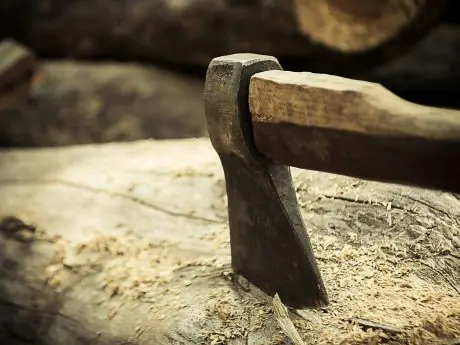
Skip the wood stacks at your local gas station and flex your outdoor muscles the next time you need to build a campfire. With a few basic tools and the right technique you can split mighty logs into pieces that catch easily and burn slowly. Plus, you'll enjoy the satisfaction of chopping wood with your own two hands instead of paying premium prices at a the local quickie mart.
More: Cooking at the Campsite: 5 Food Safety Tips
Before you start splitting logs, however, make sure it's available for you to use. Never cut down a living tree or remove branches from one while camping. At best, even a freshly felled tree is difficult to burn in a campfire. You'll have better luck lighting a wet sponge.
Also, don't pick up fallen wood unless a park or campground authority tells you it's okay. Many forest creatures rely on decaying tree trunks and branches for shelter and food.
If you've foraged it from the right places, follow these steps for chopping wood:
What You'll Need
-A sharp maul or ax. A maul is a cross between a single blade ax and a sledgehammer, and puts more "oomph" behind your swing.-Safety glasses
-Sturdy leather gloves
-Protective boots
-A companion or a cell phone nearby to call for help in case of an accident
Nice Options
-3- to 5-pound steel wedges to help split the logs
-A medium-weight sledgehammer for use on the steel wedges, if you're using an ax to split. Not required if you're using a maul.
More: Spotlight: Bryce Canyon National Park
How to Split Wood
Start with seasoned wood as it splits easier. Make sure it's free of nails or screws, as these will damage the edge of your ax or maul.
Your logs—also known as "rounds"— should be cut into 16 to 20 inch lengths with the ends square and flat so they can stand on end to be split.
Set up a chopping block, usually a large section of a tree trunk, if possible. This will raise the logs up off the ground and make it easier to swing your ax. It will also save painful straining of your back.
IMPORTANT SAFETY NOTES
-Don't use a concrete or asphalt slab as a chopping surface. If the ax passes completely through the log, the blade will get damaged, and may even send chunks of concrete or asphalt flying. If a chopping block isn't available, stand your logs on bare ground.
-Work in a safe area that offers steady footing. Make sure it's clear of debris and overhanging tree limbs and power lines and is away from windows, buildings or vehicles that could be damaged by flying wood.
-Make sure people and animals are clear of the area, as the ax could slip from your hands or the head could come off the handle.
- 1
- of
- 2
About the Author









Discuss This Article